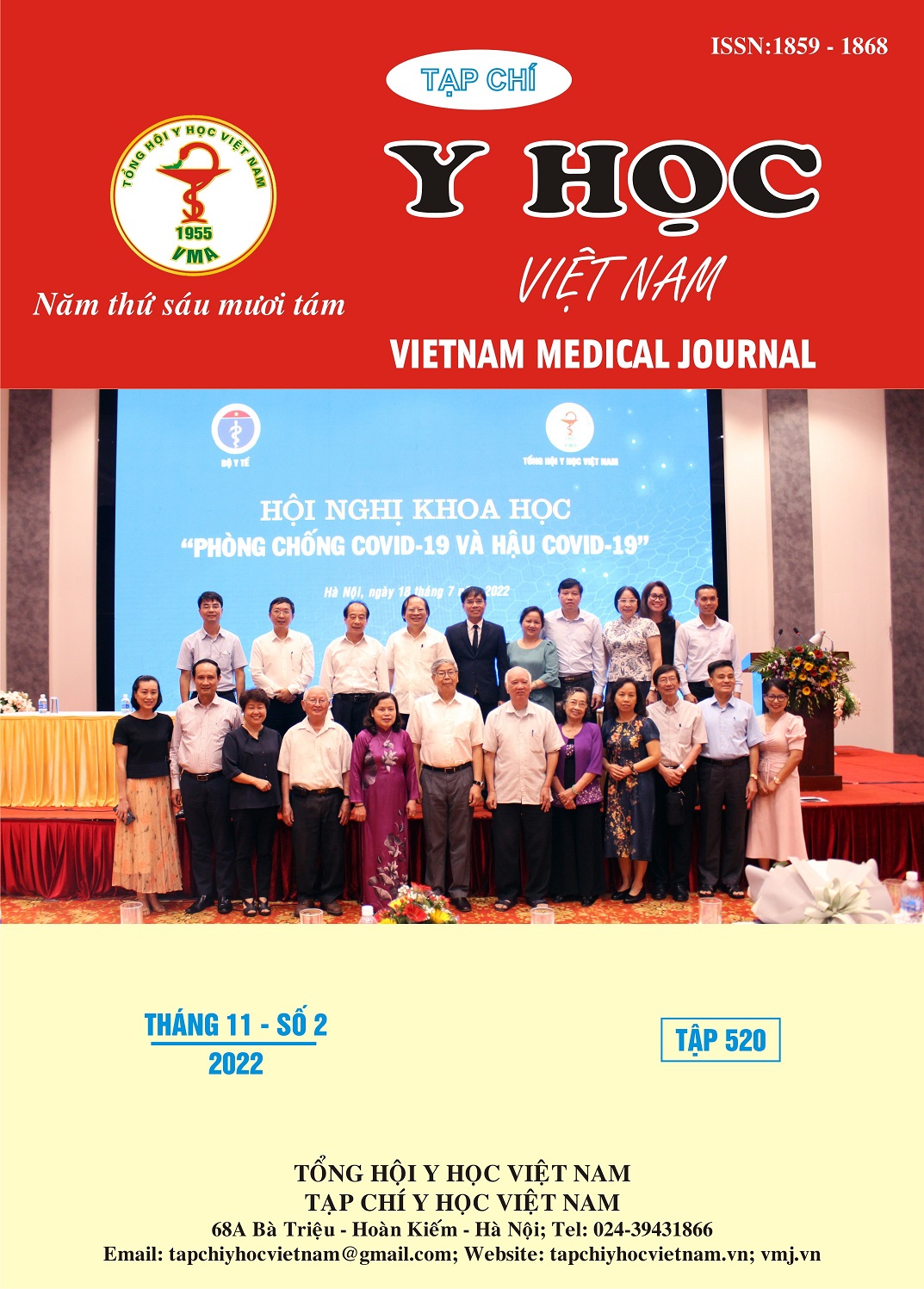EVALUATE VISUAL ACUITY AND REFRACTIVE ERROR AFTER PHACOEMULSIFICATION SURGERY IMPLANTATION IOL IN EYES WITH PREVIOUS LASER REFRACTIVE SURGERY
Main Article Content
Abstract
Purpose: To evaluate visual acuity and refractive error after Phaco IOL in eyes with previous laser refractive surgery. Subjects and methods: 26 eyes of 19 patients undergone Phaco IOL in on demand department of VNIO. Exclusion criteria: the patients did not agree to participate and eyes with a history of retinal detachment, glaucoma, corneal disease, macular degeneration, diabetic retinopathy, neuro-ophthalmic disease, ocular inflammation, and previous ocular surgery. Measurement refractive error by machine after surgery 1 week, 1 month, 3 months. Measurement uncorrected visual acuity and corrected visual acuity after 1 week, 1 month, 3 months. Results and discussion: The mean age was 43.38 ± 9.81. The lowest age was 25 years old; the highest was 66 years old. The average time of Lasik surgery was 13.90 ± 4.72 years. Preoperative visual acuity was very low below 20/60. Mean axial length: 29.22 ± 2.79 mm. Average corneal power: 37.21 ± 2.77 D. Preoperative corneal astigmatism: 1.77 ± 1.24. Mean IOL power: 16.54 ± 5.07. Distant visual acuity after surgery gradually increased after 1 week, 1 month, 3 months with the average uncorrected visual acuity log MAR at 3 months after surgery was 0.46 ± 0.19 (20/60), corrected visual acuity log MAR was 0.23 ± 0.16 (20/30). Residual spherical refraction after surgery within ± 0.5 D; 0.75 D; ± 1.0D accounted for 34.6%, 61.5% and 80.7% respectively. Average postoperative astigmatism: 1.68 ± 1.20 D. Good result accounted for 53.8%, pass was 23.1% and fail was 23.1%. Conclusion: The visual acuity results of Phaco surgery on lasik eyes treated with refractive errors at 3 months were good and accounted for 76.9%. Maximum corrected visual acuity ≥ 20/50 was 69.2%, residual refraction within ±1.0D was 80.7%
Article Details
References
2. Mansour AM, Ghabra M. Cataractogenesis after Repeat Laser in situ Keratomileusis. Case Rep Ophthalmol 2012;3:262-5.
3. Abdelkawi SA, Ghoneim DF, Atoat W, et al. 193 nm ArF excimer laser and the potential risk for cataract formation. Journal of Applied Sciences Research 2010;6:796-805.
4. Costagliola C, Balestrieri P, Fioretti F, et al. Arf 193nm excimer laser corneal surgery and photo-oxidation stress in aqueous humor and lens of rabbit: one-month follow-up. Curr Eye Res 1996;15:355-61.
5. Müller-Stolzenburg N, Schründer S, Helfmann J, et al. Fluorescence behavior of the cornea with 193 nm excimer laser irradiation. Fortschr Ophthalmol 1990;87:653-8.
6. Xiao-Zhen Wang, Rui Cui, Xu-Dong Song. Comparison of the accuracy of intraocular lens power calculation formulas for eyes after corneal refractive surgery. Ann Transl Med. 2020 Jul;8(14):871. doi: 10.21037/atm-20-4624.
7. Daizong Wen, MD; Jinjin Yu, MD; Zhenhai Zeng, MD. Network Meta-analysis of No-History Methods to Calculate Intraocular Lens Power in Eyes with Previous Myopic Laser Refractive Surgery. J Refract Surg. 2020 Jul 1;36(7):481-490. doi: 10.3928/1081597X-20200519-04.
8. Trần Thị Phương Thu và cộng sự (2007). Đánh giá kết quả thị lực và độ nhạy cảm tương phản trên bệnh nhân đặt kính AcrySof ReSTOR tại bệnh viện mắt tp. Hồ Chí Minh. Tạp chí Y học TP. Hồ Chí Minh, 11(3), 35-41.


